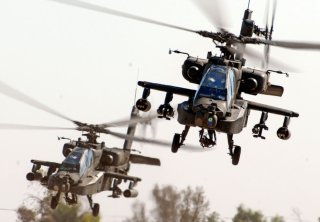Can the Army Harden Its Software Systems Before the Next War?
Cybersecurity is no longer limited to the realm of information technology but has expanded to encompass operations such as networked weapons systems.
Missiles destroying targets with advanced precision-guidance systems, tanks adjusting navigation in response to uneven terrain or enemy obstacles, and real-time drone video arriving in vehicles and command centers are all operations heavily reliant upon effective and secure computing. Cybersecurity, therefore, is no longer limited to the realm of information technology but expanded to encompass operations such as networked weapons systems, platform sensor information processing, and even precision-weapons delivery.
Naturally, this dynamic further underscores the importance of “securing,” “hardening,” and “protecting” a network from unwanted intrusions, hacking, or jamming.
“You're gaining capability by having a network of communications, you're also creating a vulnerability that if exploited by an enemy could degrade your forces. So not a new problem. But I think the cyber world opens it up to kind of a scale we're not we haven't seen before. So it is critical,” Douglas Bush, Assistant Secretary of the Army, Acquisition, Logistics & Technology, told The National Interest in an interview.
Cyber technologies are not limited to transport layer systems, meaning methods of “transmitting,” “sharing,” or “streaming” data, but also performing critical performance upgrades. Radar systems, artillery, and even large armored platforms such as tanks can operate with breakthrough sensors, fire control, and weapons guidance systems through ongoing software upgrades.
“Software, of course, relates to all of our weapons systems, which now have a cyber aspect to them. Software is really how the network functions. Getting the Army better and more efficient in terms of software acquisition is one of my highest priorities,” Bush said.
Success in this area, Bush described, pertains to an ability to sustain a continuous modernization process in increments of several years. It is something that can be done in more rapid succession, depending upon the efficiency of the acquisition apparatus.
“One of my number one priorities is maintaining pace and speed in finding ways to improve our pace and speed of acquisition. My second one, though, is software across the board. We have to get better at doing software, both how we acquire it and how we maintain it. I think that's a major push and I brought in additional leadership here to focus on just that,” Bush said.
Kris Osborn is the Defense Editor for the National Interest. Osborn previously served at the Pentagon as a Highly Qualified Expert with the Office of the Assistant Secretary of the Army—Acquisition, Logistics & Technology. Osborn has also worked as an anchor and on-air military specialist at national TV networks. He has appeared as a guest military expert on Fox News, MSNBC, The Military Channel, and The History Channel. He also has a Master's Degree in Comparative Literature from Columbia University.
Image: Flickr/U.S. Army.

